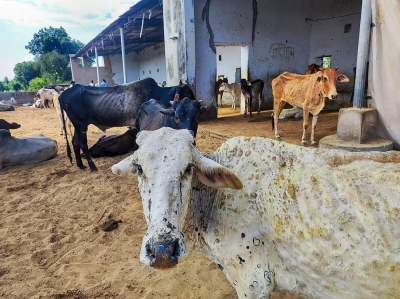
With the incidence of diabetes in children on the rise, let's take a look at the types of diabetes, risk factors for the disease, prevention and diet.
India is already known as the world's capital of diabetes with its vast adult population having diabetes. And it's not a disease that just affects adult population. The incidence of diabetes in children is steeply on the rise with an increase of 3-5% per year.
Types of diabetes in children
"Type 1 diabetes is the most common form of diabetes and can affect children as young as 1 year of age. Childhood diabetes is on the rise with a worldwide estimate of 1 lakh children under 15 years likely to develop type 1diabetes. It develops due to a process called autoimmunity leading to permanent destruction of beta cells of the pancreas resulting in little or no insulin production. This gives rise to high blood sugar levels resulting in multiple short- and long-term damage to organs if untreated," says Dr. Namratha Upadhya, Pediatrician, Pediatric Endocrinologist, Aster RV Hospital, Bangalore.
Type 2 diabetes which was once regarded as a disease of adults is increasingly seen in children now, and result from a combination of genetic and environmental factors. Children born with low birth weight and who grow rapidly during childhood can be at increased risk. Lifestyle factors such as excessive consumption of high-fat and calorie-rich foods, pre-packaged, refined and processed foods, coupled with minimal physical activity, and increased amount of screen time lead to children becoming overweight and obese. This puts them at a higher risk of developing type 2diabetes over time. Studies have shown that early onset of type 2 diabetes in children tends to be severe and progress faster than in adults, she says. There are other rare forms of diabetes which may occur due to genetic defects in insulin production or action, and diabetes occurring in children with certain chronic diseases and taking medications for some other illness.
Drinking water
Symptoms of diabetes in children "The presence of high blood sugar indicates diabetes. More common symptoms include excessive urination, excessive thirst, and getting up multiple times to urinate in the night. Children who have been toilet trained may suddenly start bed wetting. Parents may note excessive tiredness, weakness and unintentional weight loss in their children," says Dr (Mrs.) Sumeet Arora, Consultant Pediatric and Adolescent Endocrinologist, Artemis Hospital, Gurgaon. Early identification of these symptoms helps with timely diagnosis of diabetes preventing severe complications, sickness and the need for an intensive care unit admission.
What parents can do
"It is necessary to get your child's blood sugars checked if you feel your child might have any of the symptoms of diabetes. Children with type 1 diabetes, once started on treatment, might temporarily go into a phase of low insulin requirement which is referred to as 'honeymoon' phase and some might mistake this phase to be a cure for diabetes. Omitting insulin without supervision by your doctor might lead to a serious consequence in the child," says Dr. Namratha. Hence it is necessary to get your child evaluated by a professional who can guide appropriately. "Parents need to inform school authorities by giving contact numbers of children's doctor and guardian," says Dr. Sobhana. Children with diabetes can lead a normal life with professional and family support. As parents, the best gift they can give to their child is by being role models themselves and lead by example, especially in adopting healthy eating practices, keeping oneself physically active and get your child checked if you feel your child is having symptoms of diabetes and also get your child screened for obesity.
Prevention/risk factors
"There is no known prevention for type 1diabetes. It is an auto immune condition in which our immune system gets hyper activated for unknown reasons and destroy the insulin-producing cells. At present there are no established ways to prevent type 1 diabetes that can be used for children. However, research studies are ongoing towards finding medications to help prevent or delay onset of type 1 diabetes," says Dr Sumeet Arora Having a parent or sibling with type 1 diabetes puts an individual at a higher risk for developing type 1 diabetes.
Type 2 diabetes is a lifestyle-related disorder, where the body's insulin is unable to work properly causing a state of insulin resistance. Being overweight poor lifestyle and having family members with type 2 diabetes, put an individual at risk for this condition. A healthy lifestyle is essential to prevent type 2 diabetes," says Dr. R. Sobhana, Consultant Diabetologist Women Center by Motherhood Hospital. Coimbatore. With this condition on the rise in children, it becomes increasingly important to identify those at risk at an early stage, she adds. There are body mass index charts that can be used by paediatricians to determine if the children are at an overweight or obese stage. Strategies to target a normal BMI include dietary modifications and moderate to vigorous physical activity every day.
Diet
Keeping the intake of high calorie/ high sugar and processed food and sugary drinks to a minimum, adopting healthy eating practices, eating a rainbow every day (meaning consuming at least 5 different types of whole fruits and vegetables of different colours a day), consuming whole over refined foods, avoiding screen time during meals and engaging in any form of physical exercise for at least 30 minutes a day will help prevent diabetes in children..
Treatment
"Type 1 diabetes requires basal bolus insulin therapy via multiple daily dose injections or continuous subcutaneous insulin infusion via insulin pumps," says Dr. Sobhana. There has been significant advancement in insulin pumps that along with continuous glucose monitoring sensor are able to maintain near normal blood sugars with little intervention from the user. "Type 2 Diabetes can be effectively managed with dietary and lifestyle modifications along with metformin, GLPI receptor analogues and newer pharmacotherapeutic agents," says Dr. Sumeet Arora.
QUICK FACTS
- Childhood diabetes is on the rise with a worldwide estimate of 1 lakh children under 15 years of age likely to develop type 1diabetes.
- Early identification of symptoms helps with timely diagnosis, preventing severe complications, sickness and the need for a hospital admission.
- There is no known prevention for type 1 diabetes, which is an auto immune condition.
- A healthy lifestyle is essential to prevent type 2 diabetes.
Picture Credit : Google

